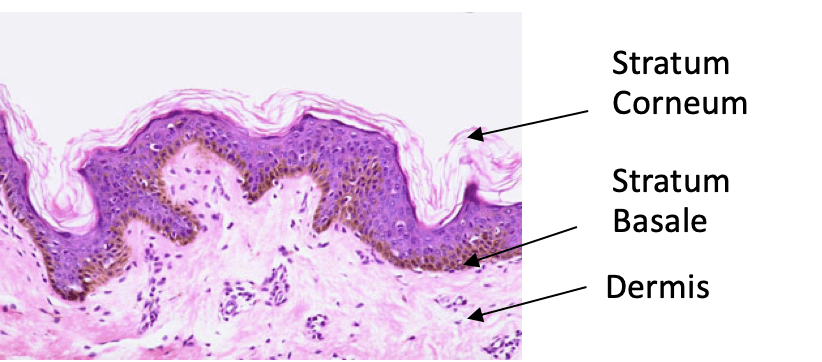The following changes make us prone to skin wrinkles:
- Excessive facial expressions/smoking create dynamic lines in the stratum corneum and then the dermis
- Epidermal cell turnover reduces so the very top layer “the stratum corneum” is present for longer subject to the causes of ageing
- The stratum corneum layer becomes more dehydrated so the lines show more
- The dermis the supportive structure underneath becomes thin, less vascular and loses collagen.
- The fat layer under the dermis reduces.
Facial Expressions
Facial expressions such as pursing the lips cause dynamic lines. These lines are usually seen in people that smoke due to the repetitive movements from the act of smoking. However, smoking also causes other physiological changes making smokers more prone to wrinkles all over.
Interestingly facial expression lines are often are seen around the mouth in non-smokers who have the habit of repeatedly using the muscles for their facial expressions.
Epidermal Cell Changes
The epidermis is the very top layer of skin which acts as a protective barrier. The lowest layer is the “Stratum Basale” this is where new skin cells are made. New skin cells get pushed closer and closer to the skin surface as more cells are made and over time they mature and become flatter and harder due to the keratin within them. When they reach the top layers they die and are eventually shed into the environment. As a result, these cells are found in dust throughout your home.
With age, this epidermal turnover slows down. Cell renewal time is the time a new cell takes to travel from the lowest layer of the epidermis the “Stratum Basale” to the top layer the “Stratum Corneum” and then shed off the skin.
Cell renewal time changes as we age:
- Babies – 14 days
- Teenagers – 21 – 28 days
- Middle age – 28 – 42 days
- 50 and up – 45 – 90 days
That means that as we age, the top layer of skin cells forming the stratum corneum are around for a lot longer. These cells have been shown to become more dehydrated with age and have been exposed to more movement and environmental factors.
These changes mean the skin is more prone to developing wrinkles and once they develop they can be harder to treat.
Some people have a thicker stratum corneum layer and these people often need treating differently to those with a thin more hydrated stratum corneum.
Dermal Changes
The dermis the supportive structure underneath the stratum corneum becomes thin, less vascular and loses collagen with age.
The dermal thickness decreases by about 20% and the blood flow reduced by about 60%. Fibroblast activity decreases which leads to a drop in collagen synthesis. The collagen content of the dermis decreases by 1% per year throughout adult life.
The collagen remaining is less effective and loses its ability to regain its shape after deformation and also holds a lot less water.
Research has shown that wrinkles appear not so much due to the degeneration of elastin fibres, as previously thought, but also due to a decrease in the water-holding collagen and mucopolysaccharides.
Sebaceous glands produce less oil as you age. Men are fortunate and don’t experience much of a decrease until their 80s. Women gradually produce less oil beginning after menopause. This can make it harder to keep the skin moist, resulting in dryness and itchiness.
Changes in the connective tissue reduce the skin’s strength and elasticity. This is known as elastosis. It is more noticeable in sun-exposed areas (solar elastosis). Elastosis produces the leathery, weather-beaten appearance common to farmers, sailors, and others who spend a large amount of time outdoors.
Changes in the Hypodermis
The hypodermis consists mainly of fat and acts as an insulator and shock absorber. With age, there is a loss of subcutaneous fat and the skin becomes thinner and less resistant to trauma. The reduced volume of subcutaneous fat means the role of the hypodermis in limiting conductive heat loss is impaired.
When it comes to ageing the loss of fat means you lose the mattress like effect of the fat which plumps the skin out giving it a smooth appearance. As the fat goes the skin is then sat on muscle and other underlying structures which can appear wrinkly.
The mouth is an area which develops lines and wrinkles due to fat loss. This is much more common in women as they gradually lose all the fat around the mouth, whereas men are often more fortunate and keep a layer of fat. Hence why women develop lip lines a lot earlier than men.

